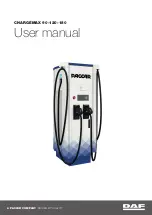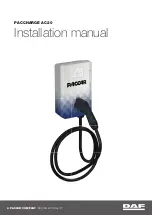
6. Battery information
There are numerous hazards associated with the use of rechargeable batteries. Compared with
conventional NiCd or NiMH rechargeable batteries, LiPo rechargeable batteries have a high
energy content. For this reason, it is essential to comply with safety regulations to prevent the
risk of a fire or explosion.
Always observe the following safety information when handling rechargeable batteries.
In addition, ensure that you observe any additional safety information provided by the battery
manufacturer.
a) General information
• Rechargeable batteries are not toys. Keep batteries out of the reach of children.
• Do not leave batteries lying around, as they constitute a choking hazard for chil-
dren and pets. Seek immediate medical advice if a battery is swallowed.
• Batteries must not be short-circuited, opened or thrown into a fire, as this may
cause a fire or explosion.
• When handling leaking or damaged batteries, always use suitable protective
gloves to avoid burning your skin.
• Never attempt to recharge non-rechargeable batteries, as this may cause a fire
or explosion.
• Non-rechargeable batteries are only designed to be used once and must be dis-
posed of properly when they are empty.
• Only recharge compatible rechargeable batteries (see “Technical data”).
• Batteries must not become damp or wet.
• Place the charger and rechargeable battery on a non-flammable, heat-resistant
surface (e.g. stone tiles). Keep the charger and battery away from flammable ob-
jects. Maintain a sufficient distance between the charger and the rechargeable
battery. Never place the battery on top of the charger.
• The charger and rechargeable battery may heat up during the charging process.
Always ensure that there is sufficient ventilation. Never cover the charger or the
rechargeable battery!
• Only use single-cell (1 S) rechargeable batteries.
• Never charge/discharge a battery when the charger is unattended.
• Never charge/discharge a battery that is inside a device or appliance. Always
remove the battery from the device before connecting the battery to the charger.
27
Summary of Contents for 1556754
Page 14: ...A Anschluss Gleichspannung B Anschluss Wechselspannung C Lüftung C B A 14 ...
Page 31: ...A DC voltage connection B AC voltage connection C Ventilation slots C B A 31 ...
Page 37: ...37 ...
Page 38: ...38 ...
Page 39: ...39 ...














































